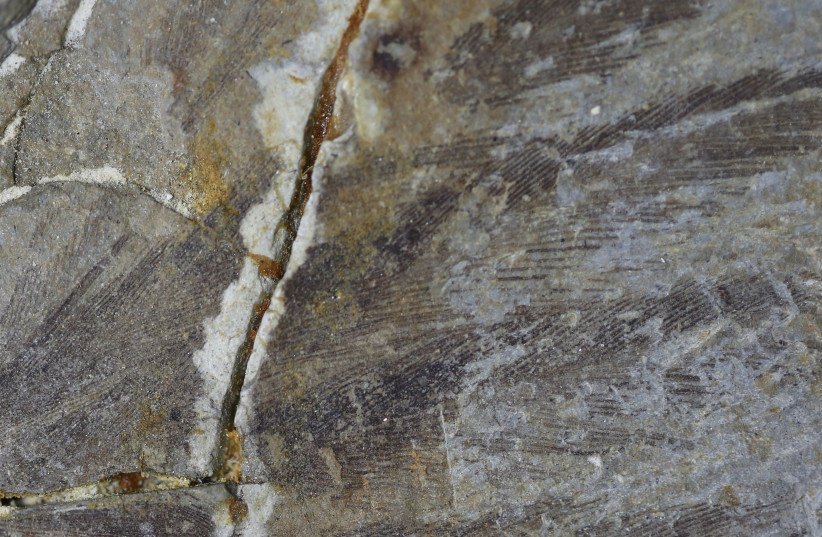Rare fossilized feathers reveal secrets of paleontology hotspot during Cretaceous period

Paleontologists analyzed the sediments to determine what kind of organic material the birds were surrounded by when they were buried and how the sediments were deposited.
Paleontologists analyzed five specimens with differently preserved feathers from Sapeornis chaoyangensis, an early bird species that lived during the Early Cretaceous epoch, some 125-120 million years ago, and was part of the famous site of Jehol Biota in China.
The findings, which studied how the environment the specimens were buried in changed the preservation of their soft tissue, were published Tuesday in a study the peer-reviewed Frontiers in Earth Science.
What is Jehol Biota?
Jehol Biota is an Early Cretaceous terrestrial and freshwater ecosystem preserved in a multi-layered rock formation. It is famous for unique fossils which preserve soft tissue such as skin, organs, feathers and fur.
“Jehol Biota provides the most informative source for understanding Mesozoic ecology,” said corresponding author Dr. Yan Zhao, based at the Institute of Geology and Paleontology, Linyi University. “Better understanding of the diverse taphonomy of Jehol terrestrial vertebrates can help us finally understand more about the past and future of biological evolution.”
Even at Jehol Biota, not all fossils are equally well preserved — and understanding the paleoenvironment is crucial to understanding the differences, researchers explained. Without this information, it’s difficult for scientists to gauge the preservation of the soft tissue, which limits the interpretation of the evidence.
But at Jehol Biota, because of the range of specimens excavated, individuals of the same species can be compared to understand the taphonomic effects – the effects of the processes that happened between death and excavation – of the environment on the soft tissue.
“An exceptionally well-preserved set of soft tissues are reported for myriad taxa from Jehol Biota, which contain irreplaceable information for understanding the early evolution of biological and ecological characteristics,” said Zhao. “We’d like to probe the factors that influence their preservation.”
In the new research, Dr. Zhao and the team examined five fossils of S. chaoyangensis from the Shandong Tianyu Museum of Natural History (STM).
All of these specimens preserve a complete and articulated (fossilized with all the joints still connected) skeleton.
One of the specimens, labeled STM 15-36, preserves a complete coat of feathers in astonishing detail.
In addition, the paleontologists collected three host sediments from various sections of each specimen.
The team analyzed the sediments to determine what kind of organic material the birds were surrounded by when they were buried and how the sediments were deposited. STM 15-36 was associated with the coarsest sediment grain as well as the best preservation, and the surrounding organic material came mainly from terrestrial plants rather than from lake algae like the other four birds. The climate when STM 15-36 was deposited was warmer and wetter, and the environment it was deposited in was more anoxic, which prevented the decay of the feathers before they were fossilized.
What explains the rapid burial?
Researchers concluded there were two possible explanations for STM 15-36’s rapid burial: volcanic activity or a powerful rainstorm washing it away and burying it under other debris.
The most likely explanation, due to the fact that fossils in pyroclastic flows don’t preserve soft tissue well, is that the bird was swept away by a rainstorm and rapidly buried at the bottom of a lake, where a restricted burial environment ensured it wasn’t disturbed. It would still be preserved in stone millions of years later thanks to this combination of circumstances.
Zhao noted that she looked forward to future studies focusing on the chemical features and microstructure of the feathers themselves, which would expand scientists’ understanding of the way these birds lived and died.
“This find provides a valuable case study of the taphonomy of Jehol terrestrial vertebrates and the nature of Mesozoic ecosystems,” said Zhao.
Jerusalem Post Store
`; document.getElementById("linkPremium").innerHTML = cont; var divWithLink = document.getElementById("premium-link"); if (divWithLink !== null && divWithLink !== 'undefined') { divWithLink.style.border = "solid 1px #cb0f3e"; divWithLink.style.textAlign = "center"; divWithLink.style.marginBottom = "15px"; divWithLink.style.marginTop = "15px"; divWithLink.style.width = "100%"; divWithLink.style.backgroundColor = "#122952"; divWithLink.style.color = "#ffffff"; divWithLink.style.lineHeight = "1.5"; } } (function (v, i) { });

